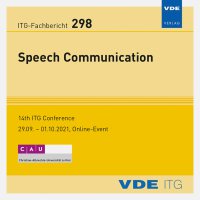The Effect of Surprisal on Articulatory Gestures in Polish Consonant-to-Vowel Transitions: A Pilot EMA Study
Konferenz: Speech Communication - 14th ITG Conference
29.09.2021 - 01.10.2021 in online
Tagungsband: ITG-Fb. 298: Speech Communication
Seiten: 5Sprache: EnglischTyp: PDF
Persönliche VDE-Mitglieder erhalten auf diesen Artikel 10% Rabatt
Autoren:
Kudera, Jacek; Moebius, Bernd; Avgustinova, Tania (Language Science and Technology, Saarland University, Saarbrücken, Germany)
Tavi, Lauri (School of Humanities, University of Eastern Finland, Joensuu, Finland)
Klakow, Dietrich (Language Science and Technology, Saarland University, Saarbrücken & Spoken Language Systems (LSV), Saarland University, Saarbrücken, Germany)
Inhalt:
This study is concerned with the relation between the information-theoretic notion of surprisal and articulatory gesture in Polish consonant-to-vowel transitions. It addresses the question of the influence of diphone predictability on spectral trajectories and articulatory gestures by relating the effect of surprisal with motor fluency. The study combines the computation of locus equations (LE) with kinematic data obtained from electromagnetic articulograph (EMA). The kinematic and acoustic data showed that a small coarticulation effect was present in the highand low-surprisal clusters. Regardless of some small discrepancies across the measures, a high degree of overlap of adjacent segments is reported for the mid-surprisal group in both domains. Two explanations of the observed effect are proposed. The first refers to low-surprisal coarticulation resistance and suggests the need to disambiguate predictable sequences. The second, observed in high surprisal clusters, refers to the prominence given to emphasize the unexpected concatenation.


